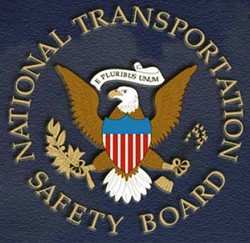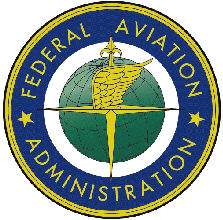Thu, Jun 16, 2005
Says Current Methods Of Collecting And Reporting On GA Safety
Issues Aren't Enough
 The National Transportation Safety
Board Wednesday released a safety report recommending that new
methods be developed for collecting and reporting flight activity
data for smaller, noncommercial (general aviation) airplanes.
The National Transportation Safety
Board Wednesday released a safety report recommending that new
methods be developed for collecting and reporting flight activity
data for smaller, noncommercial (general aviation) airplanes.
The report was prompted by NTSB concerns about the accuracy and
consistency of the procedures currently used by the Federal
Aviation Administration in calculating how much and for what
purpose people fly.
Unlike scheduled, commercial air carriers, general aviation
operators are not required to report actual flight activity
data. Instead, the FAA uses its annual General Aviation and
Air Taxi Activity (GAATA) Survey to query a sample of registered
aircraft owners, either through the Internet or by mail.
Responses from the sampling are then extrapolated to the entire
aircraft registry to obtain estimates of total activity.
The NTSB and others rely on this data to calculate accident
rates and statistics that form the basis for assessing general
aviation safety in the US. Valid activity data are necessary
to compare the accident rates for different aircraft types and
types of operations, to establish baseline measures that can be
used to identify and track accident trends, and to assess the
effectiveness of safety improvement efforts.
 However, the NTSB is concerned that
the survey is based on a relatively small sample of diverse
aircraft operations and that the aircraft registry may contain many
outdated and inaccurate records.
However, the NTSB is concerned that
the survey is based on a relatively small sample of diverse
aircraft operations and that the aircraft registry may contain many
outdated and inaccurate records.
The NTSB report discusses staff attempts to independently verify
the accuracy of general aviation activity estimates by comparing
FAA aircraft registry records and annual flight-hour estimates with
other indicators of flight activity for the years 1985-2002,
including the size of the active pilot population and annual
aviation fuel consumption. While the staff found strong
statistical relationships among these various indicators, and with
annual accident totals, they did not observe any significant
correlations between the annual general aviation flight-hour
estimates reported in the GAATA survey and the other activity
indicators.
More News
Pilot Also Reported That Due To A Fuel Leak, The Auxiliary Fuel Tanks Were Not Used On June 4, 2025, at 13:41 eastern daylight time, a Piper PA-23, N2109P, was substantially damage>[...]
Have A Story That NEEDS To Be Featured On Aero-News? Here’s How To Submit A Story To Our Team Some of the greatest new stories ANN has ever covered have been submitted by our>[...]
From 2023 (YouTube Edition): Reflections on War’s Collective Lessons and Cyclical Nature The exigencies of war ought be colorblind. Inane social-constructs the likes of racis>[...]
Aero Linx: Colorado Pilots Association (CPA) Colorado Pilots Association was incorporated as a Colorado Nonprofit Corporation in 1972. It is a statewide organization with over 700 >[...]
High Speed Taxiway A long radius taxiway designed and provided with lighting or marking to define the path of aircraft, traveling at high speed (up to 60 knots), from the runway ce>[...]
 NTSB Prelim: Piper PA-23
NTSB Prelim: Piper PA-23 ANN FAQ: Submit a News Story!
ANN FAQ: Submit a News Story! Classic Aero-TV: One Mans Vietnam
Classic Aero-TV: One Mans Vietnam ANN's Daily Aero-Linx (07.03.25)
ANN's Daily Aero-Linx (07.03.25) ANN's Daily Aero-Term (07.03.25): High Speed Taxiway
ANN's Daily Aero-Term (07.03.25): High Speed Taxiway




